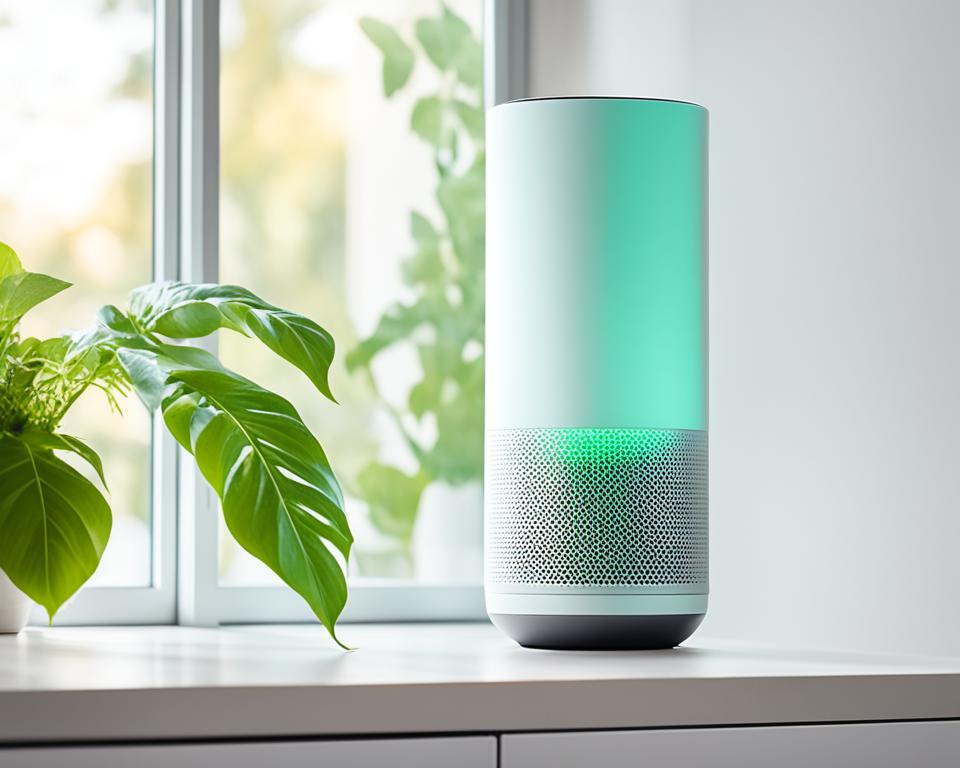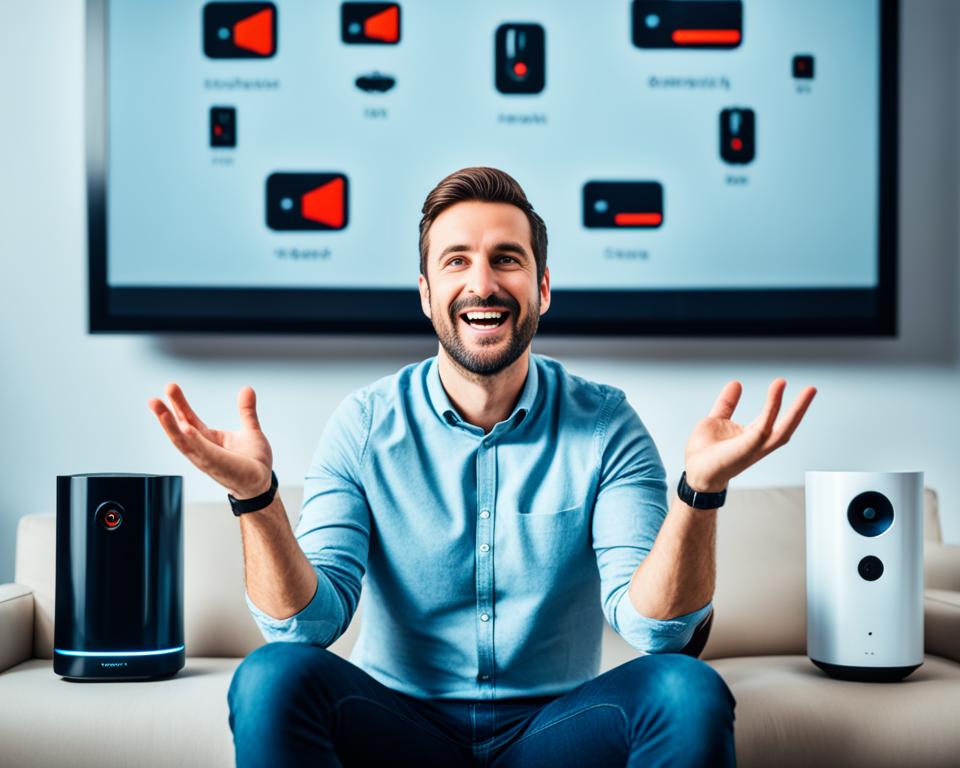In today’s quick world, voice-controlled devices are changing how we use tech. They let us use our homes and gadgets without touching them. This makes everything we do a lot easier and smarter123.
This new tech lets you do many things at once. You can ask for info or tell it what to do, hands-free. It’s great for changing home settings or planning your day. These voice devices are like having a helping hand that’s always ready to make things simple123.
What Are Voice-Controlled Devices?
Voice-controlled devices change how we use tech, letting us do things hands-free. Thanks to voice assistants like Alexa, Siri, and Google Assistant, we can control smart devices with just our voice recognition technology. We can ask questions, set reminders, and much more.
Smart Assistants and Virtual Assistants
At the core are virtual assistants such as Alexa, Siri, and Google Assistant. They’re smart enough to understand what we say naturally. Amazon’s Alexa leads with a 73% market share in the smart speaker world. Google Home and Apple’s HomePod are also big players.
Voice Recognition Technology
These devices are good at understanding what we say because of voice recognition technology. It turns our words into text so the device can follow our orders. But, there’s a danger4 – it’s easier to trick with someone else’s voice than with other security methods.
Hands-Free Control for Smart Home Devices
We love how voice-controlled gadgets rule over our home tech. Imagine turning on lights or adjusting the AC just by asking5. In the U.S. alone, there are over 20 million voice-activated smart speakers. They make life so much easier.
Yet, using voice to control tech has risks4. It’s key to update the gadget’s software, change default settings, and be careful with what you say. True for items like smart speakers and phone systems that talk to you.
- Set up strong passwords and turn on two-factor authentication (2FA).
- Watch out when buying things or sharing private info by voice.
- Delete voice recordings and switch off features you don’t use to safeguard privacy.
How Voice-Controlled Devices Work

Voice-controlled devices are getting more popular. They include smart speakers and virtual assistants
Voice Command Processing
There are steps to follow a voice command. First, the device picks up what you say through its mic. It then turns your words into text with Automatic Speech Recognition technology6. Next, it figures out what you mean by your command, through Natural Language Processing (NLP). Finally, it does what you asked, like playing music or turning off lights.
Through better models, voice recognition has gotten more accurate7. This lets devices understand and act on our words better.
Cloud-Based vs. Local Processing
There are two ways devices process voice commands. One is sending data to the cloud for analysis, used by Amazon’s Alexa and others6. The benefits include powerful computing and constant updates.
Then, some devices process commands on your local device, like Josh.ai6. This keeps your voice data at home for more privacy and safety. But, it might not be as strong as cloud-based systems.
All voice devices are getting smarter. They now offer safer ways to log in and work with various smart home tools6. As tech gets better, voice control will become smoother and easier for everyone.
These platforms are great for those who can’t use regular input methods7. They allow interaction without touching, which boosts inclusion and freedom.
Popular Voice-Controlled Devices

In today’s world, voice-controlled gadgets are very common. They make it easy to manage home tasks without lifting a finger. All you need to do is speak to these devices to get help or control things.
Popular Voice Assistants
Leading the way in voice tech are virtual assistants like Amazon’s Alexa, Apple’s Siri, and Google Assistant. These smart helpers are in many devices. They let us do things by just talking8.
- Amazon Alexa: Alexa from Amazon is one well-liked helper. It’s not too expensive and knows a lot of tricks9. By 2023, it’s said that 73.7 million people in the U.S. will be using Alexa8.
- Apple Siri: Apple’s Siri is not far behind with a big user base. It’s set to reach 81.1 million users in the U.S. by 20238. Siri works smoothly with Apple devices, making it a great choice for Apple fans.
- Google Assistant: Google’s helper is a favorite in the U.S., expected to have 85.4 million users by 20238. It can do lots, from answering questions to controlling smart home gizmos, all by listening to you.
These helpers are not just changing how we use tech. They’re also influencing businesses. Call centers and finance companies, for example, are quickly adding smart helpers for customer service8.
Smart Speakers and Voice-Activated Speakers
Smart and voice-activated speakers are very popular. They let you play music, remember tasks, and manage other devices through voice commands. A report from 2017 thinks that more than half of U.S. homes will have smart devices by 202210.
Devices like the Amazon Echo Dot and Echo Show are changing our homes. The Echo Dot is great for music and voice calls9. The Echo Show adds video, movies, and photos to its list of features9.
Voice tech is also making smart homes better and easier to use9. With things like TP-Link’s Kasa Smart WiFi Plug, you can control lights and more using voice commands. This helps save energy with smart scheduling9.
Setting Up Voice-Controlled Devices
Starting with voice-controlled devices is more than just opening the box. I need to install apps and teach the device my voice and how I talk11. Voice assistants can even be named and set up to sound and work like I want them to11.
Device and App Installation
First, I must install the devices and their apps correctly. This means getting the app from the maker and linking the device to my Wi-Fi12. It’s key that my devices work together, making my home smarter12.
Voice Training and Customization
I train my device to really hear me by letting it learn my voice and speech. This makes it better at following my commands11. Also, I can change the assistant’s name and voice, making it more like my personal helper11.


